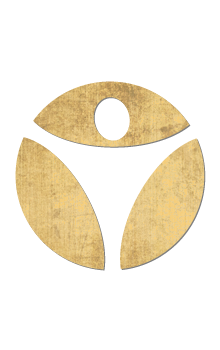Yoga for Swimmers
- Updated on: January 26, 2022

Have you ever wondered, “is yoga for swimmers?”
Swimming is a demanding sport. It requires the best of both your mind and your body. The best swimmers know how important it is to tend to not only their body but also their breathing and their mindset.
Are you looking for a dryland workout practice that will help you prevent injuries and develop flexibility?
Do you want to build strength that will actually translate to your speed in the pool?
Wish you could find a way to reduce the pre-meet jitters or calm yourself when your adrenaline is high?
Yoga can tend to all of these aspects of your swimming routine and more. This blog will explore the benefits of yoga for swimmers, the best postures to enhance your abilities in the pool, and the top breathing exercises to help your mindset and lung capacity. Lastly, you’ll learn how to integrate yoga into your regular practice right away so you can start reaping the benefits.
The Benefits of Yoga for Swimmers

Yoga offers a wide variety of benefits for all athletes, especially swimmers. The combined benefits of flexibility, strength building, mindfulness, meditation, and breath work sets yoga apart from any other exercise routine such as cardio or weight lifting. It is truly one of the best compliments to your pool workouts as a swimmer.
Develop Your Flexibility
All swimmers know that they should stretch, but it can become an afterthought post-swim. Incorporating yoga into your daily routine is a great way to ensure you’re regularly tending to and caring for your muscles. When you stretch consistently, you’ll be able to lengthen and elongate the muscles to improve your stroke, range of motion, and upper body extension.
It is also important to stretch the right way. Improper form or over-stretching may actually cause more harm than good. Yoga will teach you to stretch properly and safely to help reduce injury both on the mat and in the pool.
Get Stronger
In order to continue building muscle-tone and strength, our muscles need to be challenged in different ways that keep them engaged. Other strength building routines like weight lifting might help you get stronger, but often these exercises don’t translate into strength that actually helps you in the pool.
You will build more practical strength by adding exercise into your regimen that relies on your own body weight. Body weight exercises (like yoga) make a great addition to the dryland portion of your workout. This will help you build the core, upper body, and lower body strength that will take your swimming to the next level. That’s because swimming, a no impact sport, requires a balance of low-impact activities that will enhance your bone density and overall bone health!
Tune-in to Your Breath
Swimmers need to be aware of and in control of their breathing. Yoga breathing is an excellent way to help you develop your lung capacity, control, and the rhythm of your breath. You can practice on your mat, and find the benefits that follow you into the pool. Plus, yoga breathing can help you stay calm under pressure to calm your nerves before a big race or meet!
Care For Your Mental Health
Yoga doesn’t just offer physical benefits like flexibility or strength. Yoga is also an excellent way to tend to your mental health. The use of meditation, visualization, and mindfulness are extremely helpful for anyone experiencing stress or anxiety.
Swimmers often experience anxiety before an individual race or a big meet. On top of this, natural stress can occur due to the physical exertion your body experiences when you swim competitively. Yoga is a tool that will help you manage your stress and anxiety to improve your performance and your overall headspace before, during, and after a swim.
Top 5 Yoga Poses for Swimmers

#1 Down Dog
This classic yoga pose is an excellent, whole-body stretch. In Down Dog you’ll find length through your arms and legs. The spine is able to elongate as you stretch the hamstrings, calves, and feet. Your upper body will build strength as you actively press your palms into the mat engaging the triceps, biceps, and muscles throughout the back body.
To get into this posture, start in a tabletop position. With your hands flat on the mat, actively press your hips up and allow your heels to soften toward the floor. Eventually, the arms and the legs will straighten, but don’t force it right away. Draw your core in and gaze at your navel. Hold for 3-5 breaths and allow each exhale to help you deepen the stretch slowly and mindfully.

#2 Cat Cow Pose
This posture is ideal for swimmers, especially if you are working to improve your breaststroke since it mirrors some of the movement. Cat Cow Pose allows you to find mobility in your spine which is why cat cow pose is an ideal posture to practice regularly.
Start from a tabletop position. On your inhale, lift your tailbone, arch your spine, gaze up. Squeeze your shoulder blades together to open the chest and front body even more. On an exhale scoop your navel up and in, tuck your tailbone and bring your chin toward your chest. Dome through the upper shoulders as you press your palms and your shins into the mat. Flow through these two actions and connect the motions to each inhale and exhale for 5-10 rounds of breath.

# 3 Bridge Pose
Bridge pose helps to strengthen the back muscles which is essential to becoming a strong swimmer. This posture will also firm up the glutes and hamstrings while stretching the hamstrings, hip flexors, and the front of your body.
Start by laying on your back. Bend your knees and walk your heels in to bring your feet flat on the floor. With your arms on the floor alongside the body, press your hips up to the ceiling. Allow the chest to open as your chin softens toward your chest. Weight will fall on your shoulders, but be mindful that there is no pressure on your neck or upper spine. Engage the glutes and legs to hold yourself in place. Breathe steadily and hold for about 1 minute. When you’re ready to come out, allow the hips to slowly, mindfully lower to the floor. As a counter-stretch to this back bend, you may bring your knees into your chest to round the spine slightly.

#4 Bound Angle Pose
Swimmers are known to have tight hips. This simple hip opener feels awesome and will help you to gradually open your hip flexors and inner thighs over time.
In a seated position, let your knees fall out wide and bring the soles of your feet to touch. Sit up straight and engage your core while you tilt your seat slightly forward. This will help you avoid collapsing your weight into your low back.
As you develop your flexibility, you can soften your outer knees to the floor. To deepen the stretch further, bring your heels in closer to you. You may even grasp the feet or use a yoga strap to gently pull. You will feel more sensation while opening the chest.
If this pose feels tough to get into, allow your feet to touch further away from your body. You can also support your knees with yoga blocks, blankets, or pillows to control the depth of your stretch.

#5 Corpse Pose (Savasana)
This resting posture helps swimmers still the body, rest, and restore. You can practice Corpse Pose before or after your swim as grounding, centering practice.
Lay down on your back. Allow your legs to lengthen toward the back of your mat, heels in toes fall out. Arms can rest alongside the body with your palms up. Allow your fingers to curl in. Your eyes can close. Methodically allow each body part to relax into this restorative posture. Stay as long as you’d like. The best benefits can be found if you practice holding savasana for about 10-20 minutes.

The 2 Best Breathing Exercises for Swimmers
Let’s explore how to improve, enhance, and harness the power of your breath as a swimmer both on your yoga mat and in the pool!

Victorious Breathing
This breath exercise will help to oxygenate your blood, build heat and improve circulation, release tension, and build energy. It is used often in yoga vinyasa classes and can help you remain present with your breathing and your movements. It can also be helpful during other forms of exercise, when you’re feeling nervous, or when you’re experiencing agitation.
Also referred to as ocean breathing because it can sound like waves crashing on the beach as you inhale and exhale. To begin, you will inhale and exhale through the nose. Slowly deepen your breathing and constrict the back of your throat (as if snoring). Maintain this constriction and sound as you breathe in and out through the nose slowly and powerfully.
Skull Shining Breath
Skull Shining breath work is extremely active. It is an excellent exercise to do before a meet. It enhances blood circulation in your body and energizes the nervous system. Be sure to practice on an empty stomach.
Find yourself in a comfortable seated position with your spine tall. Start by taking a deep breath in.Exhale quickly through the nose actively pulling your navel in toward the spine to push the breath out. No need to think about the inhale, just focus on the active exhale (the breath will come in all on it’s own as the belly softens. 20 breaths will complete one round of Skull Shining breathing. Work to speed up your breath over time to add an additional challenge and the added benefits.
Start Your Yoga Practice

Yoga is extremely accessible and it requires very little to no equipment to get started! You don’t need to buy any fancy props or even join a physical yoga studio to get all of the benefits you’re looking for in your swimming routine.
Body By Yoga’s got you covered! We offer on-demand yoga classes and tutorials that you can do from the comfort of your own home in under 30 minutes!
Yoga Edge was created with athletes in mind. It’s intended to assist competitors of all types and anyone who works out to increase power, strength, and mobility as you soothe sore muscles, protect your joints, relieve pain, and enhance your recovery. This program includes two workouts made for rest-days and post-workouts that are just 25 minutes long so you can be efficient and impactful with your dryland workouts. You’ll also get a special matrix that allows you to select the yoga exercises best suited to swimming.

If you are tending a swim injury, Yoga Release is another great option for swimmers. Combines stretching, mobility, yoga, and self myo-fascial release. You’ve seen these exercises in medical offices, in the gym, and on the field with athletes – and now it’s your turn to see how quickly you can recover between workouts, how easy it is to undo the effects of sitting all day, how limber you can feel with a few select exercises, and how you can prevent and rehabilitate injuries with self myo-fascial techniques.

We hope these programs inspire you to start and maintain a yoga practice that supports your passion for swimming.
Recent Posts
Categories
Related Articles
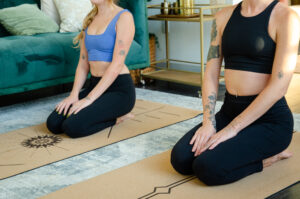
Breathing technique to improve your yoga practice
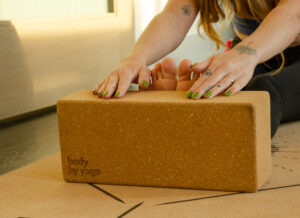
Benefits of yoga before bed
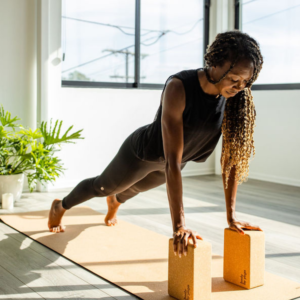
Taking the next step to more challenging yoga
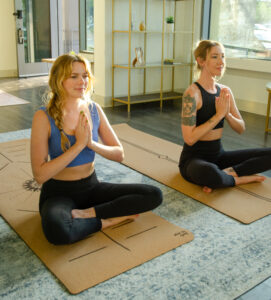
Hatha vs Power yoga
Related Articles
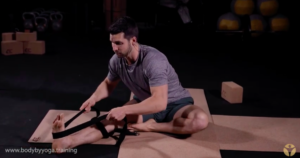
Good Stretch For Lower Back And Hamstrings
This stretch can be done before or after a workout. It’s simple, but very effective. Stretching your legs can help alleviate back pain as well.

Taking the next step to more challenging yoga
Yoga is for anyone at any level. We want everyone to feel challenged in their practice so we’ve created all-inclusive classes that will help improve
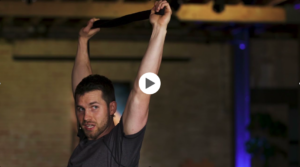
Mini sequence for beginners
We created this video for a quick sequence to stretch and build strength in your hips and shoulders. We start the video touching on
